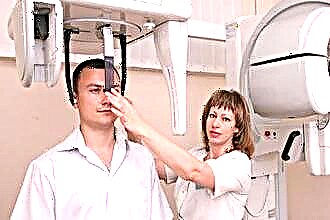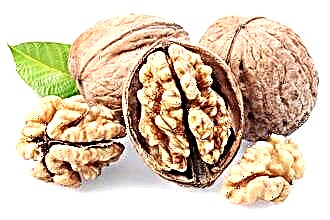In the mucous membrane of the throat and nasal cavity, there are glands (goblet cells) that produce a viscous secretion. It moisturizes the inner surface of the respiratory tract and helps to remove dust particles, allergens, viruses, microbes, etc. from the respiratory tract. If mucus in the nasopharynx accumulates in moderation, this is considered normal. Excessive production and runoff of phlegm down the back of the throat is abnormal.
The reasons for the excessive formation of fluid in the nasal cavity and throat most often lie in allergic or infectious inflammation of the mucous membranes. The drainage of viscous secretions along the walls of the pharynx is called postnasal syndrome. The mucus accumulating in the respiratory tract irritates the cough receptors and therefore often causes a paroxysmal cough. The article will consider the features and key causes of the development of the disease.
Postnasal syndrome - what is it?

Postnasal syndrome is a drainage of mucus along the back wall of the laryngopharynx, provoked by inflammatory processes in the paranasal sinuses, nasal cavity and throat. The mucous discharge penetrates into the lower parts of the respiratory tract, simultaneously irritating the cough receptors located in the respiratory tract. In this regard, patients often have paroxysmal and sometimes spastic cough.
The reasons for the development of ENT disease can be very diverse. However, excessive production of viscous secretions in the respiratory tract is associated with an increase in the secretory function of the goblet cells. Inflammation of an allergic or infectious nature can provoke sputum hypersecretion. Most often, the development of postnasal syndrome is preceded by:
- sinusitis;
- infectious rhinitis;
- hay fever;
- adenoiditis;
- unfavorable ecology.
Late treatment of postnasal syndrome is fraught with the development of degenerative processes in the mucous membranes of the nasopharynx.
Sometimes the reasons for the drainage of nasopharyngeal mucus into the lower parts of the respiratory tract lie in the abnormal development of the ENT organs. In particular, the curvature of the nasal septum entails a violation of aerodynamics in the nasal cavity. In this regard, mucus begins to evacuate from the nasopharynx not through the nasal canals, but through the laryngopharynx.
Causes
To cure postnasal drip syndrome, you need to find out why mucus flows down the back of the nasopharynx. Pathology does not always develop against the background of respiratory diseases. Sometimes phlegm begins to accumulate in the upper respiratory system due to the adverse effects of exogenous factors.
Infectious rhinitis
 An infectious rhinitis (rhinitis) is a disease that is characterized by bacterial, viral or fungal inflammation of the mucous membranes of the nasal cavity. Rhinitis accompanies the development of many respiratory diseases - nasopharyngitis, influenza, adenoiditis, sinusitis, etc. Thick mucus in the nasopharynx begins to accumulate due to edema and inflammation of the airways. In this regard, when the patient accepts a horizontal position of the body, it begins to drain into the laryngopharynx along the walls of the respiratory tract.
An infectious rhinitis (rhinitis) is a disease that is characterized by bacterial, viral or fungal inflammation of the mucous membranes of the nasal cavity. Rhinitis accompanies the development of many respiratory diseases - nasopharyngitis, influenza, adenoiditis, sinusitis, etc. Thick mucus in the nasopharynx begins to accumulate due to edema and inflammation of the airways. In this regard, when the patient accepts a horizontal position of the body, it begins to drain into the laryngopharynx along the walls of the respiratory tract.
To restore the patency of the nasal passages and the natural process of evacuation of nasal fluid, it is necessary to eliminate the inflammation in the nasal cavity. For this, vasoconstrictors, saline solutions for rinsing the nose, and topical antiseptics are usually used. If the causes of inflammation of the ENT organs are not eliminated, subsequently this can lead to the transition of the disease into a chronic form.
The development of a chronic rhinitis increases the likelihood of sinus inflammation and sinusitis.
Bacterial sinusitis
Sinusitis is an acute or sluggish inflammation of one or more paranasal sinuses (sinuses). Due to edema of soft tissues in the nasal cavity, the process of evacuation of sputum through the nasal passages is disrupted. Therefore, with the development of sinusitis and frontal sinusitis, thick discharge from the nasopharynx flows into the laryngopharynx, as a result of which the patient develops a cough.
The greatest health hazard is bacterial sinusitis, as the microbial flora multiplies very quickly. The purulent exudate formed in the paranasal sinuses can penetrate into neighboring tissues and provoke complications - meningitis, otitis media, brain abscess, etc. The following symptoms can signal the development of the disease:
- pressure in the maxillary and frontal sinuses;
- Difficulty nasal breathing;
- coughing up mucus with impurities of pus;
- fetid odor from the nose;
- high temperature.

During the hours when a person sleeps, there is an accumulation of mucus in the nasopharynx. Therefore, in the morning, immediately after waking up, the patient may experience a severe cough caused by the flow of an abundant amount of viscous secretion along the respiratory tract.
Adenoiditis
Adenoiditis is an infectious disease caused by inflammation of the hypertrophied (enlarged) nasopharyngeal tonsil. Most often, the disease develops in children under the age of 12. Inflamed adenoids in the nasopharynx prevent normal breathing and the outflow of sputum through the nasal passages. Therefore, the mucus flows directly into the laryngopharynx, provoking a spastic cough in the little patient.
Chronic dry cough and constant breathing through the mouth are typical manifestations of adenoiditis in children.
It should be understood that there are many opportunistic microorganisms in the respiratory tract, in particular fungi and bacteria. Untimely relief of inflammation in the adenoids can provoke serious complications and the formation of purulent exudate in the nasal cavity.
Pharyngitis
Pharyngitis is a constant cause of postnasal leakage syndrome. The disease is characterized by inflammation of the lymphoid tissues in the laryngopharynx, which stimulates the activity of unicellular glands in the mucous membranes. Pharyngitis can be provoked by:
- inhalation of contaminated air;
- thermal and chemical burns of the mucous membrane;
- dental diseases;
- decreased local immunity;
- endocrine pathologies.
Most often, pharyngitis develops against the background of bacterial sinusitis, runny nose and dental caries.
The development of the disease is most often indicated by pain and rawness in the throat, painful swallowing, enlarged submandibular lymph nodes and fever. If pharyngitis develops against the background of other respiratory infections, the symptomatic picture is complemented by lacrimation, sneezing, spastic cough, etc. The cause of the mucus flowing down the throat is inflammation in the laryngopharyngeal mucosa. To eliminate unpleasant symptoms, it is recommended to treat the throat mucosa with antiseptic and wound-healing sprays.
Unfavorable ecology
Adverse environmental conditions can provoke the development of postnasal syndrome. Over the past 10 years, the incidence of respiratory disease has increased 3 times. Otolaryngologists are sure that the reason for this was the excessive gas pollution of the air and climatic changes.
Airborne allergens, exhaust fumes, dust and other irritating substances negatively affect the condition of the respiratory tract mucous membranes. Subsequent inflammation of the ENT organs inevitably leads to an increase in the activity of the goblet cells and, as a consequence, excessive sputum production. If the nasopharynx is clogged with mucus, sooner or later this will lead to the development of postnasal syndrome.
To reduce the likelihood of developing respiratory diseases, experts recommend rinsing the nasal cavity with isotonic solutions at least 2-3 times a week. They will clear the airways of allergens and dust and prevent soft tissue inflammation.
Addictions
Viscous mucus in the nasopharynx forms in most heavy smokers. The fact is that the composition of tobacco smoke contains resins that settle on the inner surface of the respiratory tract. To clear foreign objects from the respiratory tract, goblet cells begin to produce mucus.
Tobacco smoking leads to a decrease in local immunity in the respiratory organs, and therefore the risk of developing respiratory infections increases.
The resins contained in tobacco smog stick together small cilia on the surface of the ciliated epithelium, which are involved in transporting viscous secretions to the nasal passages. For this reason, mucus accumulates in the airways, and then flows down the respiratory tract into the trachea and bronchi.
Conclusion
The accumulation and drainage of viscous secretions along the back of the throat is associated with inflammation of the mucous membranes. Pathological reactions in tissues stimulate the activity of single-celled glands in the respiratory tract, which begin to produce large amounts of mucus. Due to the inflammation and swelling of the nasal passages, it begins to drain along the walls of the larynx, causing a cough reaction in patients.
Postnasal syndrome occurs as a complication of some allergic (allergic rhinitis) and infectious (pharyngitis, sinusitis, adenoiditis) diseases. Inflammation in the airways can be provoked by unfavorable exogenous factors - gassed air, smoking, etc. In rare cases, the disease develops due to an abnormal structure of the nasal septum or injury.



